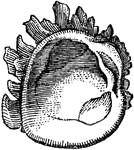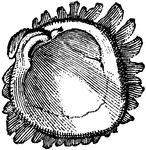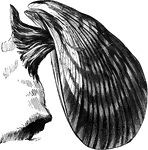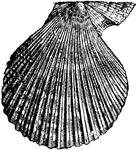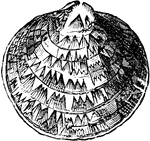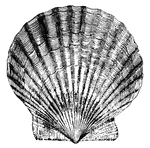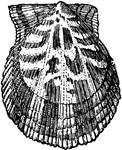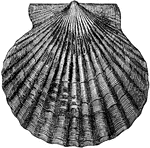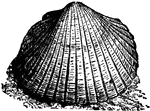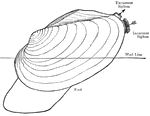The Clams and Other Bivalves ClipArt gallery features 148 illustrations of bivalves, including species of clams, mussels, scallops, and oysters.
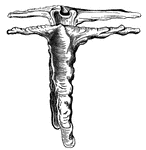
Malleus Alba (Lamarck)
"Only six actually living species of the genus have been found; these inhabit the Indian Ocean, the…
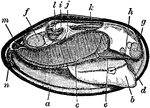
Mussel Anatomy
"Longitudinal Section through a Fresh-water Mussel. a, edge of mantle; b, foot, with position of ganglion…
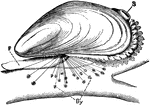
Blue Mussel
"Mytilus edulis, attached by byssus (By) to a piece of wood. F, foot; S, exhalant siphon." -Parker,…
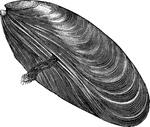
Common mussel
"Though inferior to the oyster, immense quantities of the Common Mussel, Mytilus edulis, are…

Freshwater Mussel
"The fresh-water mussel...the bivalve in motion in the mud with protruded foot (F.); nonte inhaland…

Freshwater Mussel
"The fresh-water mussel...the inside of the shell (left valve)...u., The umbo; L., the ligament; c.t.,…

Freshwater Mussel
"The fresh-water mussel...the outside of the shell (right valve)...u., The umbo; L., the ligament; l.g.,…
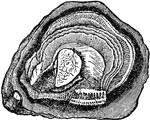
Oyster
An edible bivavle mollusk, closely allied to the mussels, and which forms an important article of commerce.…
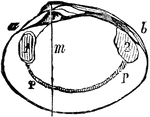
Oyster
Oysters grow for the most part in marine or brackish water. Inside a usually highly calcified shell…
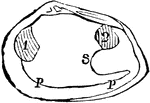
Oyster
Oysters grow for the most part in marine or brackish water. Inside a usually highly calcified shell…
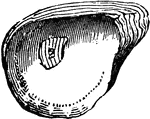
Oyster
Oysters grow for the most part in marine or brackish water. Inside a usually highly calcified shell…

Oyster
"Anatomy of the Oyster. A. Hinge or anterior umbonal end of the left valve of an adult oyster, upon…

Oyster Shell
An illustration of a oyster shell. The common name oyster is used for a number of different groups of…
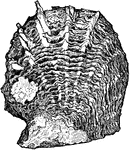
Oyster Shell
An illustration of a oyster shell. The common name oyster is used for a number of different groups of…
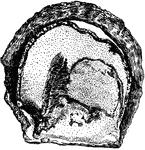
Oyster Shell
An illustration of a oyster shell. The common name oyster is used for a number of different groups of…
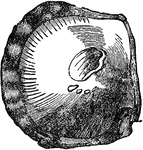
Pearl
A calcareous secretion formed chiefly of calcium carbonate, and found as a morbid deposit around a central…
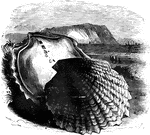
Pearl-oyster
"Furnishes the fines pearls; the shells are also imported in vast quanities, the inner layer, known…
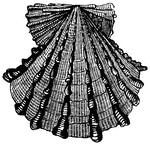
Pecten Foliaceus.
Smooth-shelled Pectens have colors that are frequently lively and brilliant. This is the Coral Pecten.
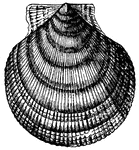
Pecten Islandicus (Chemnitz.)
Smooth-shelled Pectens have colors that are frequently lively and brilliant. This is the Northern Pecten.
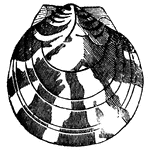
Pecten Pseudamussium (Chenu.)
"The Watered Pecten belongs to the scallop-shells. The shell is generally nearly circular, more or less…
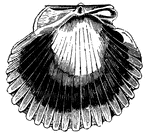
Pecten Purpuratus (Lamarck.)
Smooth-shelled Pectens have colors that are frequently lively and brilliant. This is the Purple Pecten.
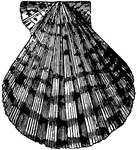
Pecten Tigris (Lamark.)
Smooth-shelled Pectens have colors that are frequently lively and brilliant. This is the Tiger Pecten.
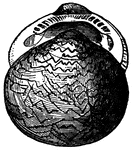
Pectunculus Scriptus (Lamarck)
"On the shores of the Mediterranean and along the Atlantic coast, species of the genus Pectunculus…
Pelecypod
Shells of a pelecypod found in the elevated sand beds of northeastern New England, New Brunswick, etc.…
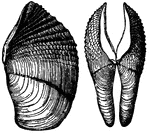
Pholas Crispata (Linnaeus)
This species is able to hollow out a home in a solid block of gneiss, one of the hardest rocks. To excavate…
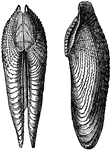
Pholas Dactylus (Linnaeus)
This species is able to hollow out a home in a solid block of gneiss, one of the hardest rocks. To excavate…
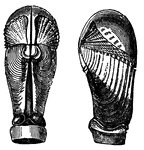
Pholas Melanoura (Sowerby)
This species is able to hollow out a home in a solid block of gneiss, one of the hardest rocks. To excavate…

Pholas Papyracea (Solander)
This species is able to hollow out a home in a solid block of gneiss, one of the hardest rocks. To excavate…

Unio pictorium
"The unio pictorium is common in Europe, and derived its name from the fact that its shell…

Piddock
A small mollusk. Burrows in soft rocks and is frequently killed by the cold when exposed during times…

Pinna Bullata (Swainson)
"The genus Pinna was so called from its resemblance to the plumelet which the Roman soldiers…

Pinna Nigrina (Lamarck)
"The genus Pinna was so called from its resemblance to the plumelet which the Roman soldiers…

Pinna Nobilis, with its byssus (Linnaeus)
"The genus Pinna was so called from its resemblance to the plumelet which the Roman soldiers…

Pinna Rudis (Linnaeus)
"The genus Pinna was so called from its resemblance to the plumelet which the Roman soldiers…
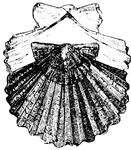
Scallop
Scallops are distinguished by the regular ribs of the shell, and by the two angular projections that…
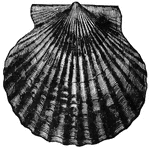
Scallop
Scallop; also known as the crusader's badge. While at rest the scallop lies on the bottom with its valves…
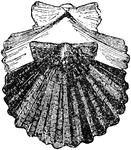
Scallop
The name of several species of shell-fish, so called from their round, ribbed shell with scalloped edges.…

Shell Fossil
An illustration of a Club-shell fossil from the Tertiary period. The Tertiary is a an out-of-date term…
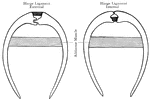
Clam Shell
Mechanism for opening and shutting a clam shell, note the internal and external hinge ligament..
